Odds are you’ve seen a rodent in your life. The rodent order includes everything from rats and mice to squirrels and beavers. Though these species play key roles in the health of their environments and in the food chain, they can be horrible pests if they find their way into your home or garden. Rats, in particular, cause significant damage to crops, property, people, and pets each year through their voracious appetites and rodent-borne diseases. Luckily, several common plants can help naturally repel rats in the first place.

Even if they haven’t invaded your house or made a permanent home in your garden, rats aren’t a guest you want around. Rat droppings and other waste products are just as effective at spreading disease as the critters themselves. Plus, if you’re growing food for your own family in your yard or garden, you don’t want the rats beating you to the harvest. It can be hard to get rid of a rat problem once it starts, though. Traps and mousers can only do so much, while poison will have a lasting effect on the ecosystem and should be treated as a last resort overseen by a professional.
By and large, plants with strong odors are beneficial choices, as are those that are toxic to a variety of animals — though those can be harder to place if you have pets. Let’s take a look at the top 12 plants most effective at keeping rats away in the first place.
Chrysanthemums

The bright colors of chrysanthemums bring color to any garden while repelling rats.
©StopperOhana/Shutterstock.com
Beautiful and bright, chrysanthemums come in hundreds of cultivars — so choose your favorite colors and use them as borders for your garden beds! Chrysanthemums bloom in the late summer and fall, so they can be used to offset other plants that bloom earlier in the year.
Chrysanthemums’ bright yellow center is the powerhouse here. Packed with a unique compound called pyrethrin — which is now considered one of the most effective and important natural pesticides in the world — these yellow centers help prevent a wide variety of pests, including insects and rats. Unfortunately, they themselves can attract thrips and nematodes, so maintain your blooms to keep them healthy!
A majority of chrysanthemums sold in garden centers bloom for just one year before dying back. Be sure to either replant your blooms, save your seeds, or choose a hardier perennial variety that will come back year after year for continual protection. For an added boost of rat repellent all year round, save and dry some of your chrysanthemum blooms and turn them into a powder to spread at key entry points pests might be using!
Rosemary

Rosemary blooms attract many varieties of beneficial insects to your garden while warding off rats.
©Maren Winter/Shutterstock.com
Rosemary’s strong and unmistakable fragrance provides a great natural deterrent for rodents. Plus, with its hardy root system and tough branches, established rosemary plants can survive most winters in temperate zones and offer year-round protection from critters. Safe for both kids and pets, rosemary also comes with culinary and medicinal uses, making the addition of rosemary to your garden doubly useful!
In addition, rosemary blossoms are a favorite of many different types of bees, butterflies, and nectar-feeding flies. These pollinators will then help other blooms in your garden as well! Cut branches and homemade oils can also be spread in high-traffic areas for extra potent rat repellent.
Peppermint
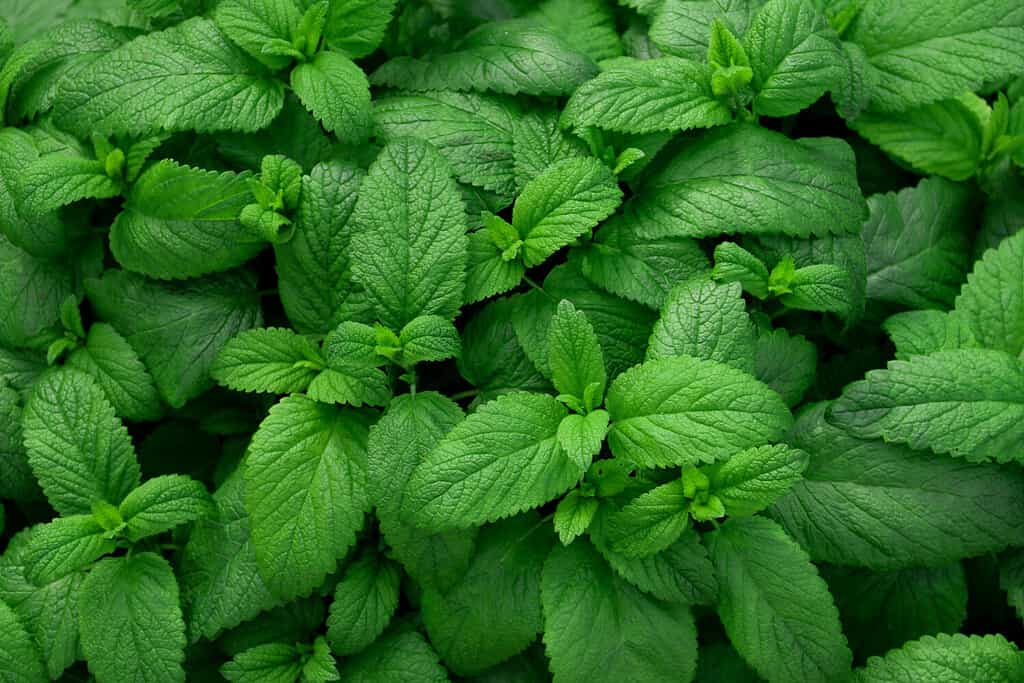
All types of mint offer a pungent ward against pests like rats and mosquitoes. Peppermint, though, is the strongest and most effective.
©Olesya Myzzz/Shutterstock.com
Another pungent addition to our list, peppermint, naturally contains two of the main compounds used in rodent repellents: pulegone and menthone. Moreover, peppermint oil is often praised as an affordable and eco-friendly deterrent for many pests, not just rats. It’s also an ethical option, one that rats just avoid rather than one that actively harms them.
However, to be most effective at repelling rats, peppermint’s natural oils have to be released. The leaves have to be crumpled, chopped, or made into oil for maximum effectiveness. If you have a healthy plant, this fast-growing perennial can more than withstand frequent pruning for you to scatter its leaves or make some deterrent.
Sage
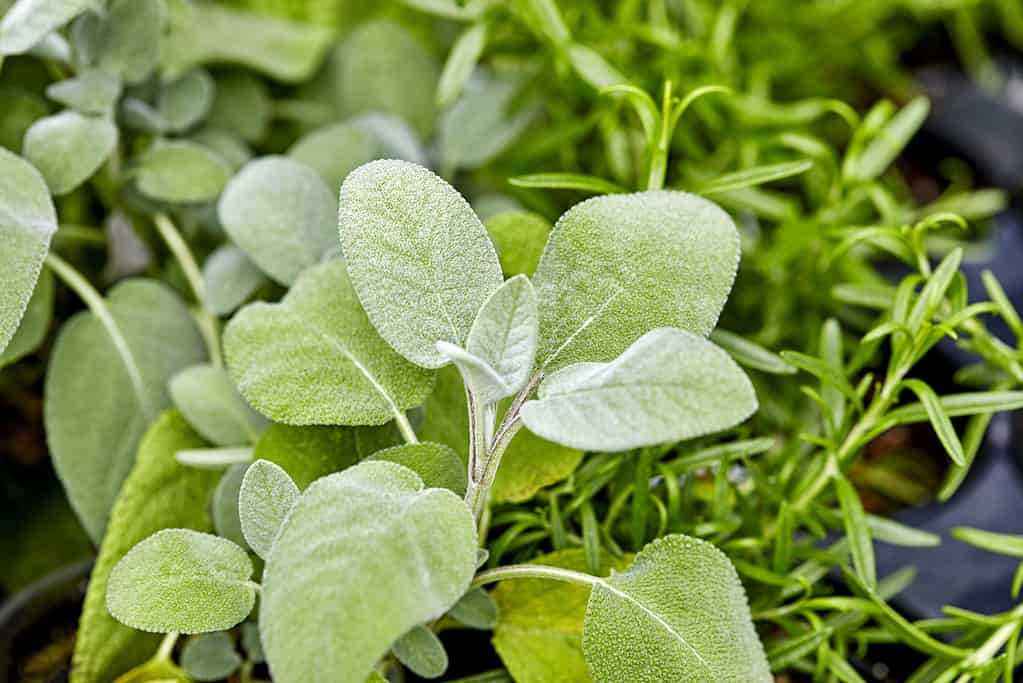
Sage makes a flavorful addition to any garden and helps repel pests with its fragrance.
©iStock.com/wingedwolf
People have cultivated sage for centuries for both culinary and medicinal purposes, with the added effect of deterring a variety of insects and pests as well! Sage will grow year-round in temperate zones, providing all-year protection if planted in the right place. Just brushing past these fuzzy leaves releases a waft of their strong scent — one that’s sure to keep the rodents at bay. Since it’s a perennial, sage bushes can grow up to three feet high, though you can keep yours in check with regular pruning.
Lavender
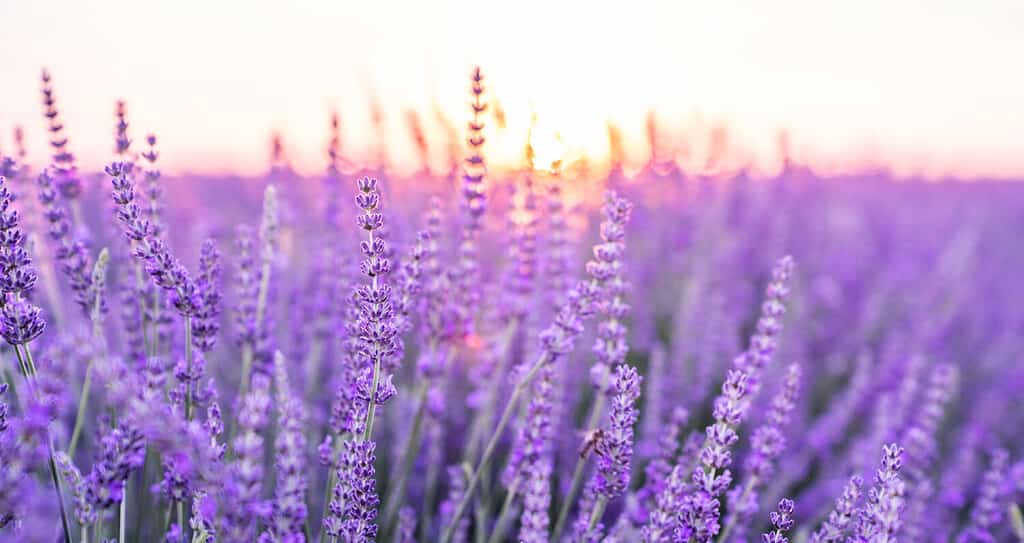
Lavender makes a great border plant for keeping rats away.
©ESstock/Shutterstock.com
Even without a rat problem, lavender is a garden favorite. Its beautiful purple spikes and pleasing scent make it common and readily available for your pest-repellent needs. For us, lavender smells light and dainty. For rats and other small rodents, lavender is overwhelming and something to be avoided. A barrier of lavender makes a great way to keep the sensitive rodents out without resorting to plants with thorns or other drastic measures.
More Dangerous Rat Repellents
Don’t mind adding some toxic varieties of plants to your garden to repel rats? Most animals will know these options are poisonous and therefore avoid them, but keep an eye on pets and small children around these plants.
Daffodils
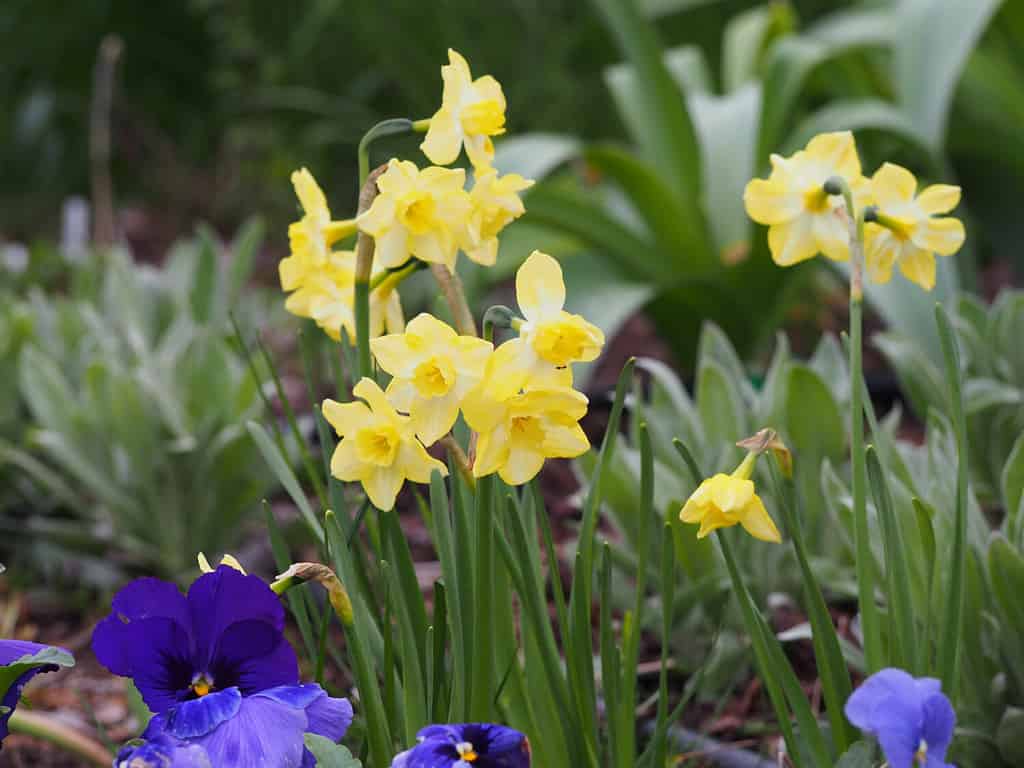
The bright yellow of daffodil blooms often means spring has arrived.
©Anna Gratys/Shutterstock.com
These beautiful heralds of spring are another plant rats hate because of their strong scent. Daffodils’ combination of pungent terpenoids promotes pollination by attracting various insects while simultaneously driving off other pests. Unfortunately, daffodil blooms don’t last long past the spring, so their usefulness is limited. Once the blooms and foliage die back, however, the daffodil bulbs themselves are poisonous to small mammals and will prevent mice, rats, squirrels, and voles from creating nests or burrows nearby.
Christ Plant, or Crown-of-Thorns

The sharp thorns of the Christ plant give it its name and also serve as a deterrent for rats.
©iStock.com/Rawf8
This unique plant features two forms of rat repellent — sharp spikes on the plant’s exterior make for a painful promise, while its sap is toxic to even large animals, so rats don’t stand a chance. If you suspect pests are entering through a specific gap or hole in your fence, planting an impenetrable wall of Christ plant may solve the problem! However, you must carefully cut or damage the plant to expose the toxic sap, but the wall of thorns alone may prove sufficient.
Camphor Laurel

Camphor laurel trees offer shade and an odor that repels most pests.
©John Robert McPherson / CC BY-SA 4.0 – License
If you have space in your yard for an evergreen tree, perhaps consider the camphor laurel. This tree’s beautiful glossy leaves emit a unique and strong odor of camphor — a smell that’s woody yet herbal, spicy yet cooling, and sharp yet earthy. All parts of this tree contain the compounds important for a natural pesticide, including the small berries the tree drops. However, the camphor laurel is poisonous to most animals and affects the digestive system. Both the strong smell and inherent toxicity of this plant work like a charm to repel rats.
Elderberry
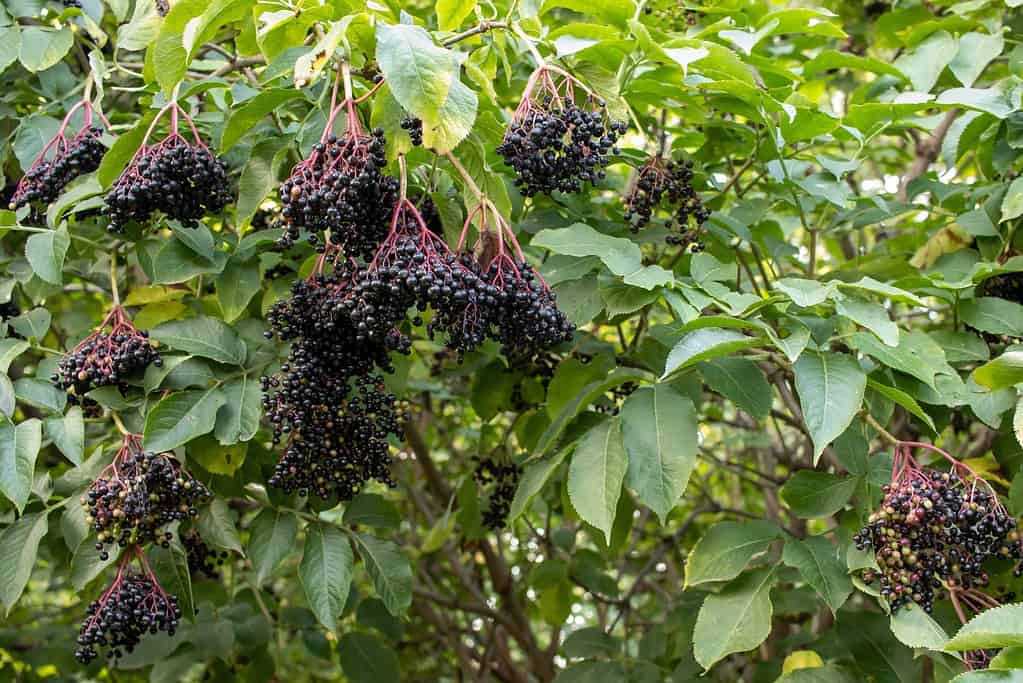
Elderberry bushes have a unique smell that repels rats and other pests.
©Juver/Shutterstock.com
A beautiful shrub, elderberry provides huge harvests of their coveted dark berries each year that can be fermented into wine or honey. Other parts of the plant, though, are often poisonous, and the whole shrub carries a strong fragrance. This can be off-putting to people, but rats really hate it. This shrub therefore makes an excellent border plant for your garden since it repels both large and small wild animals. If you’re planning to harvest the berries while also taking advantage of the plant’s repellent nature, be sure to choose one of the edible varieties rather than one that produces poisonous fruit.
Other Natural Ways to Repel Rats
If none of the plants above work to repel your rats, here are some additional options to help keep the pesky critters at bay.
Onions

Raw onions are fatal to rats, but they must be cut up to repel most pests.
©iStock.com/rootstocks
As humans, we love onions. It’s a primary ingredient in most cuisines. However, many of our smaller mammal friends hate onions. The sharp, spicy smell of onions is a great deterrent for rats and other rodents, but only if the onion is cut. An intact onion with its skin on won’t be very effective, which is why onions weren’t included in the list above — simply growing onions in your garden won’t keep rats away.
Finely chopped onions make an excellent addition to a homemade pesticide, though, which you can spray or pour around the parts of the garden experiencing rat disturbances. Consider creating a purée of onion and peppermint or rosemary leaves, as mentioned above, for an extra pungent deterrent!
Black Pepper
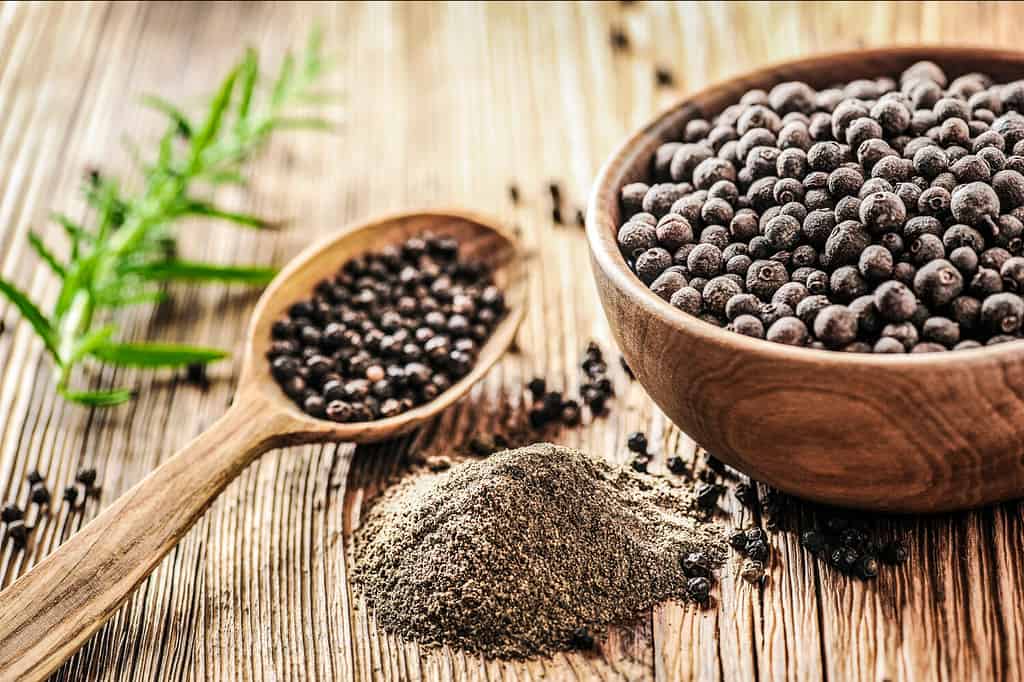
Peppercorns grow best in a tropical environment, but dried and ground peppercorns work best as a repellent.
©Krasula/Shutterstock.com
Few of us live in a climate conducive to growing peppercorns ourselves. It’s such a ubiquitous seasoning these days, however, that most of us will have black pepper on hand. Besides, to be most effective, the peppercorns must be dried and crushed. That means that simply growing black pepper wouldn’t do the trick.
Both mice and rats hate pepper. It interferes with their sense of smell and ability to tell if a plant is poisonous. Also, the primary compound in pepper, piperine, is toxic to rats. When combined with other deterrent ingredients — such as cayenne pepper or our onion concoction from above — black pepper makes a fantastic temporary rat deterrent.
Citronella or Lemongrass
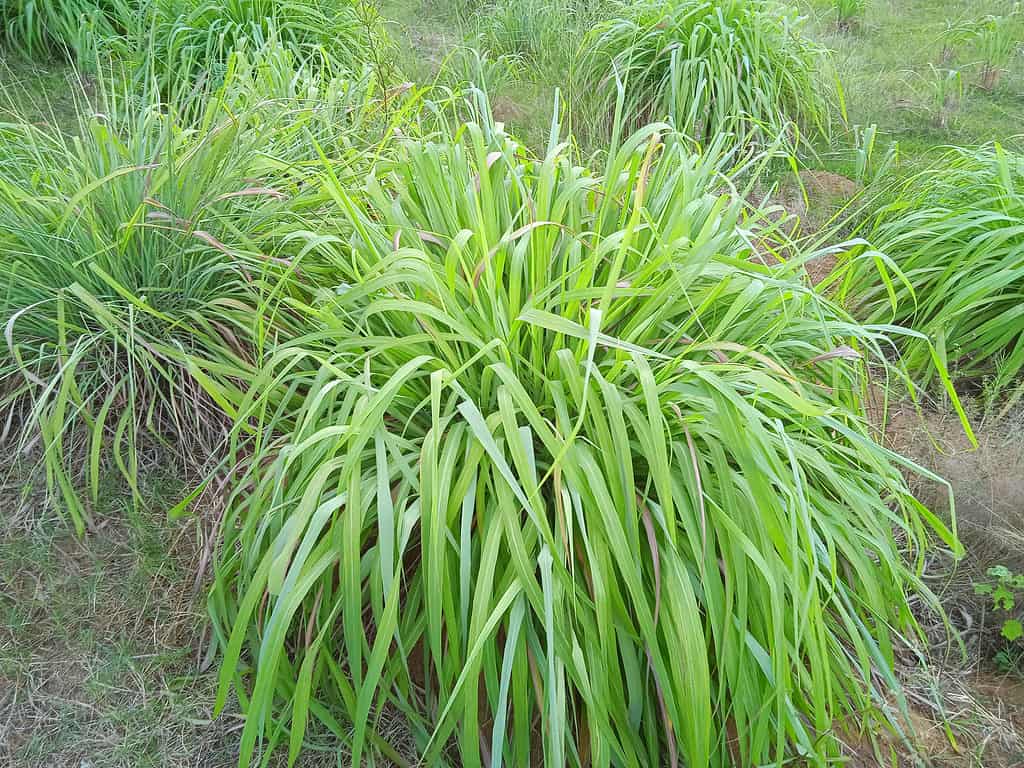
Citronella grass makes a great garden addition, but you’ll need its essential oils to drive off pests.
©iStock.com/Siti Aisah
Like other additions to our list, both lemongrass and citronella are strong in the smell department. Their lemony scent, which may be pleasant to us, overwhelms a rat’s sense of smell and keeps them away. Plus, citronella is well-known to repel other irritating pests, like mosquitoes. Similar to other mentions in this section, however, the plants alone won’t deter the rats. You’ll need their essential oils, which you can find in a variety of sprays or candles.
General Upkeep
What rats lack in size, they make up for in resourcefulness. Whether searching for food or shelter, they look for the easy option. That means one of the best ways to repel rats is to never attract them in the first place! Try these tips to make your space unattractive to any unwanted rodent guests.
- Keep your yard and garden trimmed and tidy to eliminate potential nest sites. Wood piles, debris heaps, dense shrubbery, and thick ivy can all serve as a home for rats
- Rats love a balanced diet of fruits and vegetables, especially those grown in our gardens. Harvest often and remove any fallen fruit, veggies, or nuts promptly to keep them out of reach for rats.
- Patch holes in fences quickly to deny critters easy entry
- Food residue on barbecues and outdoor fire pits can attract a variety of pests — make sure to clean any spills or leftovers promptly
Summary
Rats, mice, and other rodents are key components to natural ecosystems, but they’re nothing but a nuisance in your garden! From the damage they can cause to structures and plants to the potential spread of rodent-borne diseases to food and pets, rats mean bad news. The first goal, of course, is to not invite them in the first place. Careful management and general upkeep of your yard and garden will help here. Once that fails, however, the next best thing is to fill your garden with plants that serve as natural repellents to hopefully drive them out before they get too comfortable.
For the most part, rats hate smelly plants. Anything that has a strong smell has the potential to deter or repel rats. Fortunately, most of the scents rats hate, humans generally love. We have cultivated lavender, rosemary, peppermint, and sage for centuries. Meanwhile, onions and black pepper continue to be mainstays in our food. Brightly colored flowers continue to thrive in gardens everywhere, and even the more dangerous options have grown alongside humans for many years. Incorporate any of these plants that repel rats into your garden and hopefully say goodbye to your unwanted guests!
Summary of 12 Plants That Repel and Keep Rats Away
| Rank | Repellent Plant | Type of Repellent |
|---|---|---|
| 1 | Chrysanthemums | Basic |
| 2 | Rosemary | Basic |
| 3 | Peppermint | Basic |
| 4 | Sage | Basic |
| 5 | Lavender | Basic |
| 6 | Daffodils | Dangerous |
| 7 | Christ Plant, or Crown-of-Thorns | Dangerous |
| 8 | Camphor Laurel | Dangerous |
| 9 | Elderberry | Dangerous |
| 10 | Onions | Natural Repellent |
| 11 | Black Pepper | Natural Repellent |
| 12 | Citronella or Lemongrass | Natural Repellent |
The photo featured at the top of this post is © anoldent / CC BY-SA 2.0 – License / Original
Thank you for reading! Have some feedback for us? Contact the AZ Animals editorial team.







